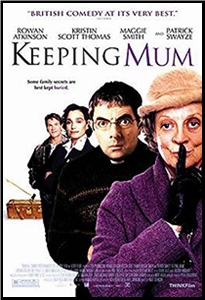Sun 13 Oct 2019
Archived Mystery Review: A. E. W. MASON – At the Villa Rose.
Posted by Steve under Reviews[7] Comments
A. E. W. MASON – At the Villa Rose. Inspector Gabriel Hanaud #1. Hodder & Stoughton, UK, hardcover, 1910. Scribner’s, US, hardcover, 1910. Serialized in nine parts in The Strand Magazine, beginning December 1909, as “Murder at the Villa Rose.” Reprinted many times, including Scribner’s Crime Classics, US, paperback, 1979, as Murder at the Villa Rose. Filmed four times: At the Villa Rose (silent, 1920), At the Villa Rose (1930), Le mystère de la villa rose [The Mystery of the Villa Rose] (in French, 1930), At the Villa Rose (1940). Also produced as a stage play (London, 1920).
A classic, as the Scribner’s paperback suggests? Consider the date it was first published, 1910, and here it is, back in print again. How many other books published in 1910 can you think of that you can say that about? And how many people of good taste must have read it by now? If it’s a classic, it will have had to have earned the title.
It is dated. If it were to be submitted to a publisher as newly written, there’s no doubt a revision would be demanded. Reading the first chapter relieves some fears, however — the symptoms of old age are there, but the book has not yet succumbed to the afflictions of rigor mortis.
In that first chapter, with precise pictorial writing, Mason described the first meeting of Mr. Ricardo with Mlle. Celie. She is on the verge of melancholy hysteria and despair outside a French casino; nest she is being soothed by the wealthy young English inventor, Mr. Wetherall.
On the very next night, Celie’s benefactress, whose companion she is, is robbed and murdered. The girl stands accused, at least of complicity. All the evidence, as well as the testimony of the maid, points directly to her. Nor does her background as a stage-variety spiritualist speak well on her behalf.
Mr. Wetherall asks that the famed M. Hanaud of the Paris Sûreté be called in. Hanaud is not only a gifted detective, but he is also a forerunner of all those other masterminds who know, or guess, and do not tell. Of course I know that Conan Doyle often allowed Holmes to lapse into this poor excuse for a storytelling device, but at least Holmes never insulted Watson, at least not directly, nor did he ever ridicule him for poorly asked questions, as Hanaud so badly treats Ricardo.
Speaking of whom — on pages 79-80 of the paperback edition Ricardo very nicely summarizes the eight salient features he sees in the mystery. Included in the replies Hanaud later makes to the questions that Ricardo happens to ask is one based on one of those very points. The latter (as a gentleman) accepts the rebuke when Hanaud loudly suggests that Ricardo has foolishly missed a vital point of the case.
The mystery is solved by page 145. The remainder of the books recounts that final version of the reconstructed crime, and Hanaud’s feeble attempt to explain the guesses in deduction that he made.
Well, as you can see, I was already biased. This may be too harsh a judgment, and by no account should you take this to mean that Hanaud’s version is impossible. It’s just that the facts, as described, I submit there is no reader who would have come to the same conclusion as Hanaud did by guesswork, pure and simple.
A classic? From a historical point of view, perhaps so. As a mystery, it’s an outdated one.They just don’t write them like this any more.


